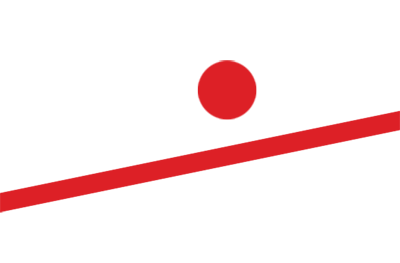DETAILLED PROJECT DESCRIPTION
“Unmeasurement” focuses on inaccuracies, the failure of the measuring process. Instruments for measurement, marking and construction are explored physically, visually and musically. Through acrobatics and objects manipulations the performers develop a kind of inversion of the measurement – towards a multiplication of possibilities, a poetics of the indefinite. Following the logics of measuring, the performances show an ongoing struggle to create a system in the midst of a reality impossible to grasp.
Used for the design and construction of architectural spaces, the tools “ruler”, chalk line and laser form the basis of spatial-performative investigations. Through the performative use of the tools, their functions and the associated concepts of “measuring the world” are questioned. The performances develops further in each specific location. As an exploration of each specific space, it brings it out simultaneously. Angles and surfaces are measured, marked and thereby transformed. Through live visuals, experimental music and artistic movements a fictional space emerges from the real space. The reliability of supposedly objective definitions is unsettled. The question of emotional stability and one’s own geographical or architectural point of view is re-stated.
BACKGROUND
Tools and their usage illustrate relationships between (human) bodies and spaces. Measuring, marking and constructing processes require specific technical objects, which in turn (co-)determine their handling, results and, finally, our view of the world. The instruments are extensions of one’s own body, the link to the material. They are part of a reference system that we constantly relate to while architectonic spaces are related to us. Geometric or geographical points of view, lines, surfaces, verticals or horizontals exist only in relation to something else, that has been previously defined. Absolute definitions are not possible. Rather, any attempt to record measurement results sets limits to the visible world and reduces it to that measurable unit. And yet, that limitation and assumed certainty provide an emotional security. The development of the performance is based on my interest as an architect and performer in investigating spaces choreographically. How do supposedly neutral geometric figures (lines, angles, distances, surfaces), affect our individual scope of action? Are they part of a normalization of time, space and bodies that can be visualized and challenged by a performative method of “un-measuring”? With “Unmeasurement” we try to create a performative space that addresses this questions, expanding our room for maneuver, our capabilty to act, rather than limiting it.
„The chalk line is a simple tool that allows a workman to draw a long straight line on a surface to act as a guide for some work to be done. Most commonly used by carpenters or masons, the line might serve as a reference to follow.“
W. Ruecker, in “History of chalk line instruments in relation to plumb bobs”
THE TOOLS
The folding rule (yardstick) is emblematic for the development and associated cultural changes in the transition of measuring systems into modernity. While units such as cubits, inches and feet originally refer to human (and therefore variable) body measurements, the abstract length of the meter is not matched by such an equivalent. In its rigidity, the ruler stands for a decision to understand the distance between two things as a geometric form, as a limited and therefore measurable line. Without the reduction to fixed positions and straight lines, precise measurements are impossible and will inevitably fail. As plotting this straight line, the chalk line is an indispensable builders marker instrument. By being stretched and plucked over a surface, the chalk dust adhering to it leaves a fine line on the ground. It works as a two-dimensional marker, as a reference and orientation for the following actions. The laser is a modern tool, a unitless ruler out of light particles that can potentially measure the infinite and mark the empty space. The enregistered values result from the measurement of the time required for the light to strike from a solid object back to the instrument.
The interplay between the human body, the measuring instruments and the three-dimensional axis system (length, width, depth or x, y, z) with the added fourth dimension of time (in the form of the light beam or as a sound rhythm), forms the basis for “unmeasurement”. Measuring and marking within these four dimensions while constantly switching the scales become the guidelines for instructions and actions._
PERFORMANCE
The performances of UNMEASUREMENT are based on scores from found space, analogue video images, live-generated sound and movements. Audience and performers move with the actions/ through an experimental space that involves/encompasses the entire architectural surface. The marking and reference systems are constantly alternating. The perception of space, also in relation to one’s own body, is constantly changing by the superposition of the individual elements. The aim of the performance is to unsettle the sense of space of the audience and to defocus/blur supposedly given physical laws as well as their related worldviews.
MOTION: Irritation of physical laws
The movement research is based on the examination of specific tools. As a trained architect and through my practice as lighting designer and technical director of dance and circus projects, I assume an everyday routine in handling these objects. Mechanical forces such as weight, friction, resistance or centrifugal force are studied as well as size ratios or limitations of the own body in its elasticity and strength. The incorporation of movement techniques from the circus corresponds to this project, since these are explicitly interactions with the three-dimensional space. Displacements on the vertical axis, in the height of space, play a more significant role than in other artistic practices. Weight, forces, distances and time are physical units that are used in acrobatic techniques as movement impulses. The violation of certain basic laws of physics is a major driver in the development of movement material.
